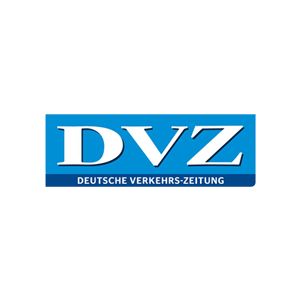Winter tires for trucks and general winter regulations for commercial vehicles in Europe.
In Germany, for the winter of 2022/2023, tires on trucks must be fitted to all permanently driven drive axles of vehicles over 3.5 tons in “winter conditions”, i.e. in cold, slippery, snowy or slushy conditions. But: Since 2021, there are also some new rules for trucks. These stipulate that commercial vehicles with a maximum permissible mass of over 3.5 tons (classes M2 and M3 as well as N2 and N3) must be equipped with winter tires in winter conditions not only on the drive axle, but also on the “front steering axles”.
Further conversions to follow next year in 2024

There is a further innovation that has been given a little more time: from 2024, M+S tires may no longer be used on drive and steering axles in winter conditions, but only those with the symbol of the three mountain peaks and the snowflake (three-peak mountain snowflake symbol, 3PMSF). The long deadlines were granted to give industry, retailers and transport companies enough time to adapt. M+S tires may still be used until the winter of 2024/25, but only those manufactured before Jan. 1, 2018.
For fleets that are procuring new tires for the upcoming winter season, it makes sense to purchase “proper” winter tires directly. It is important to note that winter tires will be mandatory for steering axles since 2020. “It is important to note that only a tire that bears the symbol of a mountain with a snowflake will then be considered a winter tire according to the regulation,” says Koch. Whether it is a new, used or retreaded tire is irrelevant, explains the expert, DEKRA tire expert Christian Koch.
“Real” winter tires compared to M+S tires

However, the tires with the mountain peaks and the snowflake – just like the M+S tires – are not really winter tires, but rather a compromise: they can be used all year round. Those who drive to Norway in winter should rather buy real winter tires. These provide a much better grip in snow and black ice, as this test also shows. Disadvantage: If one drives with these winter tires in warm areas (over 6°C), one would have to change the tires again. Because the softer “real” winter tires then wear out much faster and make the vehicle run much more unsteadily. The all-season tires, on the other hand, have much less rolling resistance and more mileage.
What regulations apply to the winter tire obligation abroad?
Anyone who drives a truck to Austria or another EU country must inform themselves about the regulations there. This is because the regulations sometimes differ considerably from country to country. With the help of Continental’s comprehensive overview, we show here how other countries handle the winter tire obligation.
| Country | Tire regulations | Snow chain regulations | Further information |
|---|---|---|---|
| Albania | No general winter tire regulations. | Snow chains for the drive axle must be carried in the vehicle. Use according to traffic signs and road conditions. |
Studded tires prohibited. |
| Austria | Winter tires compulsory from 1 November to 15 April. Risk of driving ban and heavy fines if you do not comply (€35 up to €5,000). Vehicles > 3.5 t GVW must be equipped with tires marked M+S and/or with the Alpine symbol (3PMSF) on at least one drive axle with a min. tread depth of 6 mm (bias) and 5 mm (radial). Winter tires are compulsory for buses (categories M2, M3) from 1 November to 15 March. | Snow chains must be carried in the vehicle for at least two drive axle tires from 1 November to 15 April. Exceptions for public service buses apply. Use on roads covered with snow and ice. | Studded tires are prohibited for vehicles > 3.5 t GVW. |
| Belgium | No general winter tire regulations. Symmetric fitting compulsory for M+S and winter tires. v | Snow chains only allowed on roads covered with snow and/or ice. | Symmetric fitting compulsory |
Bosnia- Herzegovina | From 15 November to 15 April there are two options that are mandatory for vehicles with more than 8 seats and for vehicles with > 3.5 t GVW: Option 1: Tires with winter profile on the drive axle with min. 4 mm tread depth. Option 2: Tires with standard profile with min. 4 mm tread depth; in case of winter conditions (e.g. snow fall, freezing rain), snow chains need to be mounted on the drive axle. | Snow chains must be carried in the vehicle from 15 November to 15 April. | A snow shovel and a bag of sand weighing between 25 kg and 50 kg must be carried in the vehicle. Studded tires prohibited. |
| Belarus | No general winter tire regulations. | Snow chains only allowed on roads covered with snow and ice. | Studded tires allowed. |
| Bulgaria | From 15 November to 1 March summer or winter tires with minimum 4 mm tread depth are mandatory. | Snow chains must be carried in the vehicle from 1 November to 31 March. Usage is compulsory on mountain passes when indicated by traffic signs. | Studded tires prohibited. Without adequate winter equipment, entry into the country may be refused or a driving ban may be issued. |
| Croatia | Winter tires compulsory from 15 November to 15 April. M+S tires are compulsory on the drive axle of vehicles > 3.5 t GVW. | Snow chains required for the drive axle in certain conditions (if the vehicle is equipped with SU tires). Snow chains compulsory in some regions (Lika/Gorski Kotar). | Studded tires prohibited. Commercially used vehicles must carry a snow shovel. |
Czech Republic | Winter tires compulsory from 1 November to 31 March depending on road conditions in winter, or if indicated by „winter kit“ sign. M+S tires with min. 6 mm tread depth must be fitted on the drive axle of vehicles > 3.5 t GVW. | Differing traffic signs possible. Snow chains are compulsory if indicated by traffic signs on at least 2 drive wheels of vehicles with 3 or more axles. | Studded tires prohibited. |
| Denmark | No general winter tire regulations. | Snow chains allowed from 1 November to 15 April. | Studded tires allowed from 1 November to 15 April. If fitted, studded tires should be mounted on all axles during this period. |
| Estonia | Winter tires compulsory for vehicles < 3.5 t GVW (radial tires with min. 3 mm tread depth) from 1 December to 1 March (also from October to April depending on weather). Heavier vehicles do not require winter tires, but minimum tread depth of 3 mm is mandatory. | Snow chains are compulsory if indicated by traffic signs on at least 2 drive wheels of vehicles with 3 or more axles. | Studded tires allowed between 15 October and 31 March. |
| Finland | Mandatory winter tires from 01.11-31.03, if winter conditions; on non-steering drive axles 3PMSF or POR or studded tires. M+S marked tires allowed until 30.11.2024 On drive axle min. 5 mm and all other axles min. 3 mm tread depth. | Snow chains only allowed on roads covered with snow and ice. | Studded tires allowed between 1 November to 31 March if winter conditions prevail. |
| France | Winter equipment is mandatory for vehicles driving on roads marked with the B26 and/or B58 sign. The following changes apply from 2021: From November 1 to March 31, at the discretion of the local authorities (préfectures), vehicles > 3,5 t GVW must be fitted with 3PMSF tires (minimum of two 3PMSF tires on one steer axle and minimum of two 3PMSF tire on one drive axle) or mount snow chains for the drive axle. There is a transition period until 2024 for M+S tires already in use. | Use of snow chains when indicated by traffic signs. | Vehicles < 3.5 t GVW: Studded tires allowed from 1 November to 31 March, max. speed 90 km/h. Vehicles with studded tires have to be labelled with a sticker. |
| Germany | In wintry weather conditions vehicles with > 3.5 t GVW must be fitted with tires marked with 3PMSF at the wheel positions of the permanently driven axles and front steering axles. M+S tires produced before 1 January 2018 are accepted until 30 September 2024. | Use of snow chains when indicated by traffic signs. Studded tires prohibited. Exception: Route via “Kleines Deutsches Eck”. | €60 fine for unsuitable tires; €80 fine for causing obstruction/disturbance of traffic due to unsuitable tires; €100 fine for causing hazardous situation due to unsuitable tires; €120 fine for causing an accident due to unsuitable tires. Plus 1 point in each case (Flensburg points system). |
| Great Britain | No general winter tire regulations. | Snow chains only allowed on roads covered with snow and ice. | Snow chains only allowed on roads covered with snow and ice. |
| Hungary | No general winter tire regulations. | Snow chains only allowed on roads covered with snow and ice. It may be compulsory to apply and carry snow chains under certain weather conditions (max. speed: 50 km/h). In wintry conditions, foreign vehicles may be denied access if no snow chains are carried on board. | Studded tires prohibited. |
| Iceland | No general winter tire regulations. | ||
| Ireland | No general winter tire regulations. | Snow chains only allowed when roads covered with snow and ice. | |
| Italy | No general winter tire regulations. Exceptions are indicated by traffic signs. | An anti-skid device (e.g. snow chains) must be carried in the vehicle. | |
| Kosovo | No general winter regulations. | Snow chains for the drive axle must be carried in the vehicle. Use according to traffic signs and conditions. | Studded tires prohibited. Buses and trucks must carry a snow shovel. |
| Latvia | Winter tires (M+S) compulsory for vehicles < 3.5 t GVW from 1 December to 1 March. Minimum 4 mm tread depth. Heavier vehicles do not require winter tires, but a minimum tread depth of 3 mm is mandatory. | Snow chains only allowed on roads covered with snow and ice. | Studded tires allowed between 1 October and 30 April for vehicles > 3.5 t GVW. |
| Liechtenstein | No general winter tire regulations. However, there are liability issues if unsuitable tires are used. The vehicle equipment must be suitable for the weather conditions. | Snow chains allowed. Not necessary in valleys. In the mountains, traffic signs indicate if snow chains are compulsory. | Vehicles > 7.5 t GVW: Studded tires allowed from 1 November to 30 April, max. speed 80 km/h. If fitted, all tires should be equipped with studs. Vehicles with studded tires have to be labelled with a sticker. |
| Lithuania | Winter tires compulsory for vehicles < 3.5 t GVW from 1 November to 1 April. Heavier vehicles do not require winter tires, but a minimum tread depth of 1.6 mm is mandatory. | Snow chains only allowed on roads covered with snow and ice. | Studded tires allowed between 1 November and 1 April. |
| Luxembourg | All drive axles on trucks and buses need to be equipped with winter tires (M+S suffices) during winter conditions (snow, ice, glazed frost). | Snow chains only allowed on roads covered with snow and ice. | Studded tires prohibited. |
| Macedonia | No general winter tire regulations. | Snow chains must be carried in the vehicle from 15 October to 15 March if the vehicle has only standard tires fitted. | Coaches and heavy trucks must carry snow shovels. Studded tires prohibited. |
| Montenegro | Tires marked with the M+S symbol or winter tires compulsory from November to April on specific roads, specified by Ministery of Police. Min. 4 mm tread depth. | Snow chains for the drive axle must be carried in the vehicle. Use according to traffic signs and conditions. | Studded tires prohibited. Buses and trucks must carry a snow shovel. |
| Netherlands | No general winter tire regulations. | Snow chains not allowed on public roads. | Studded tires prohibited. |
| Norway | Vehicles > 3.5 t GVW must be fitted with winter tires from 15 November until 31 March: 3PMSF tires on drive axle and front steer axle, M+S or 3PMSF tires on free roling axles. Depending on the region, tires must have min. 5 mm tread depth during the winter season. In south Norway: between 1 November and first Monday after Easter. In north Norway: between 16 October and 30 April. | It is mandatory for vehicles > 3.5 t GVW to carry snow chains in the period when it is legal to use studs. A truck with trailer must carry 7 chains. | It is mandatory for vehicles > 3.5 t GVW to carry snow chains in the period when it is legal to use studs. A truck with trailer must carry 7 chains. |
| Poland | No general winter tire regulations. | Snow chains only allowed on roads covered with snow and ice. Adequate traffic signs on roads where snow chains are compulsory. | Studded tires prohibited. |
| Portugal | No general winter tire regulations. | Snow chains temporarily compulsory when indicated by traffic signs (high-altitude regions only). | Studded tires prohibited. |
| Romania | In case of wintry road conditions M+S or winter tires are compulsory for the drive axle of all vehicles > 3.5 t GVW and vehicles transporting people (with more than 9 seats). | Vehicles > 3.5 t GVW have to be equipped with snow chains which need to be mounted when indicated by respective traffic signs. | Shovel and sand required for vehicles > 3.5 t GVW. Studded tires prohibited. |
| Russia | In December, January and February, passenger light truck, trucks and buses must be equipped on all axles with tires marked M+S or with the 3PMSFSymbol (Three-Peak Mountain Snowflake symbol) Minimum tread depth: 4 mm. | Snow chains are recommended but not compulsory. | Use of studded tires is forbidden in the summer months (June, July, August). |
| Serbia | Winter tires (M+S) and min. 4 mm tread depth compulsory from November to April. Use according to traffic signs and conditions. | Snow chains for drive axle must be carried in the vehicle. Use according to traffic signs and conditions. | Studded tires prohibited. Buses and trucks must carry a snow shovel. |
| Slovakia | Winter/M+S tires compulsory for trucks > 3.5 t GVW from 15 November to 31 March on the drive axle (min. 3 mm tread depth). | Snow chains must be carried in the vehicle. Use according to traffic signs and conditions. | Studded tires prohibited. |
| Slovenia | From 15 November to 15 March there are two options that are mandatory on vehicles > 3.5 t GVW: Option 1: winter tires at least on the drive axle (min. 3 mm tread depth) Option 2: standard tires, but chains must be carried in the vehicle to be mounted on the drive axle in case of winter conditions. | Snow chains must be carried in vehicles > 3.5 t GVW if no winter tires are fitted. | Studded tires prohibited. |
| Spain | High mountain roads with red level (15/TV-87): Buses can drive with tires marked with the 3PMSF symbol (ThreePeak Mountain Snowflake symbol) in all positions and minimum tread depth 4 mm. Rigid trucks between 3.5 t and 7.5 t GVW only for garbage collection, food distribution, transport of fluxes and assistance vehicles can drive with winter tires in all positions and minimum tread depth 4 mm. Other trucks not allowed to drive. | High mountain roads with red level (15/TV-87): Snow chains in rigid trucks between 3.5 t and 7.5 t GVW and buses, if no winter tires are fitted. | Usage of studded tires with up to 2 mm studs are allowed on snow-covered roads. |
| Sweden | In wintry weather conditions, minimum tread depth is 5 mm on all axles except trailers (1,6 mm). Vehicles > 3.5 t GVW must be equipped with 3PMSF, POR or studded tires on front and drive axles, on other axles M+S tires are also allowed. Until 30 November 2024, it is allowed to use M+S (specially developed for winter) on all axles. | Snow chains recommended to be carried in the vehicle. | Studded tires are allowed from 1 October to 15 April. Depending on the weather conditions this period may be extended. Maximum of 50 studs per meter circumference in tires produced after 1 July 2013. Please note exceptions on specific roads. |
| Switzerland | No general winter tire obligation exists. However, the vehicle must be equipped according to the road conditions and be safe to operate. If unsuitable tires were fitted in case of an accident, be aware of potential liability issues (e.g. limited insurance benefits). In winter conditions, situational regulations (snow chains) are possible, e.g. on Alpine passes. | Use of snow chains in case of respective road signs and conditions (four-wheel drive vehicles may be excluded). | Studded tires are allowed for vehicles < 7.5 t GVW between 1 November and 30 April on snow-covered roads. Max. speed 80 km/h. Studded tires have to be labeled with a sticker 80 km/h. |
| Turkey | It is obligatory to equip vehicles used for passenger and goods transport with winter tires on regional roads for 4 months between December 1st and April 1st. Within the provincial borders, local governors decide whether to enforce winter tire regulation and make necessary announcements according to average local temperatures. It is obligatory to fit winter tires on drive axles of trucks, tractors, tankers and buses, and on all axles of light trucks, vans and taxis, minibuses, vans and commercial cars. Any tire to be replaced on the road has to be replaced with a winter tire. Within the obligatory period, winter tires should bear (M+S) symbol or snowflake symbol (3PMSF) or both on the sidewall. The tread depth and pattern of retreaded tires should comply with winter tires even if they bear (M+S) symbol on the shoulder. Winter tires should have a tread depth of min. 4 mm for trucks, tractors, tankers and buses and 1.6 mm for light trucks, vans and cars. | Having or using a tire chain with the vehicle does not absolve drivers from their obligation to use winter tires. | Only studded tires that can be used on ice can substitute winter tires. The tread depth should be measured from the tread center. |
| Ukraine | No general winter tire regulations. | Snow chains only allowed on roads covered with snow and ice. | Studded tires are allowed. |
Currently, no general winter tire regulations for trucks are known for the countries Greece, Malta, and Cyprus. For specific snow chain and spike regulations, please refer to the traffic regulations of the respective countries.
Despite careful research, we cannot guarantee the accuracy and completeness of the information. This table with status as of 26.10.2022 is subject to constant updates, therefore Saloodo! assumes no liability in case of errors or updates. Source: Continental Tires.
What are the fines for non-compliance?
Those who do not adapt their tires to the new rules must expect a fine:
- Defective tires: 60 EUR plus one point in Flensburg.
- In the case of obstructions caused by defective tires: 80 EUR plus one point in Flensburg.
- In the event of an accident caused by defective tires: 120 EUR plus one point in Flensburg.
Fines abroad for violation of the winter tire obligation
| Country | Compulsory winter tyres | Compulsory snow chains | Fee |
| Austria | Yes, for winter road conditions 1.11 to 15.4 | indicated by signs | up to 5.000 Euro |
| Switzerland | No, but joint liability in the event of an accident in the event of an accident caused by unsuitable tyres | indicated by signs | approx. 90 Euro |
| Italy | Not uniform. Sometimes indicated by signs, in South Tyrol from 15.11. to 15.4. | indicated by signs | 87 – 345 Euro |
| France | Yes, in some regions Permanent obligation to have winter tyres | indicated by signs | 135 Euro (no further driving possible) |
| Slovakia | Yes, in winter road conditions | no | starting from 60 Euro |
| Norway | No | Nein, aber Fahrzeuge mit Sommerreifen müssen bei winterlichen Straßen mit Schneeketten ausgerüstet sein | starting from 75 Euro |
| Poland | No | indicated by signs | – |
| Czech Republic | Yes, general winter tyre obligation from 1.11 to 31.3 of the following year | no | 55 – 92 Euro |
| Serbia | Yes, for winter road conditions conditions from 1.11 to 1.4. | Must be carried in the boot and fitted if necessary and mounted if necessary | amount not known |
The ADAC table as of 26.10.22 is subject to constant updates, therefore Saloodo! assumes no liability for errors or updates. Source: ADAC
Advantages and disadvantages of winter tires for HGV
The advantages are obvious
- safe progress in ice and snow
- increase mobility
- significantly reduce the risk of accidents
- ensure shorter braking distances
But there are also disadvantages
- not yet mandatory on all axles
- no guarantee for mobility in winter
Source: https://www.winterreifen.net/lkw-vorschriften-winter/










